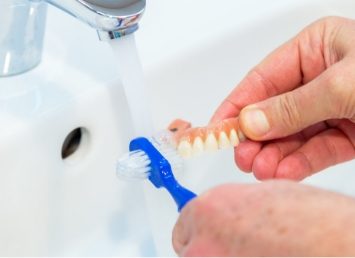Hygiene practices in removable prosthodontics: A systematic review
OBJECTIVE: To systematically review the recent scientific evidence about the
hygiene practices of removable prosthodontics relative to the effectiveness, colour
and dimensional stability. Furthermore, this review aimed also to identify patients’ attitudes
and habits towards denture hygiene.
METHODS: Three electronic databases (MEDLINE/PubMed, Scopus and Cochrane Library)
were screened, in English language, between January 1995 and December 2016. Moreover, a
supplementary hand search in the reference list of the identified articles was
also performed. Also, Controlled clinical trials (CCTs) involving patients with no
clinical signs of denture stomatitis along with a comprehensive aim to assess the
effectiveness of hygiene interventions and their impact on prosthesis colour and
dimensional stability were eligible for inclusion.
RESULTS: Following a thorough screening of titles/abstracts/full texts and
consideration of the defined inclusion criteria, 21 CCTs examined the
effectiveness of the hygiene approaches, 3 evaluated the colour stability of
dentures subjected to hygiene practices, 2 examined the dimensional stability of
dentures following microwave disinfection and 30 studies registered patients’
attitudes and habits towards denture hygiene.
CONCLUSIONS: Combined application of different hygiene interventions, including
brushing or ultrasound vibration in conjunction with chemical agents, leads to
more effective outcomes (reduction in denture biofilm percentage and/or number of
microorganisms’ colony-forming units). In addition, the dimensional stability seems to be
unaltered, but the number of clinical trials was limited. Likewise, critical concentrations
of cleansing solutions along with the duration of their implementation influence
the serviceability of dentures regarding colour stability. In fact, brushing represents
the most commonly applied hygiene practice, while denture wearers’ attitudes are
not complied with the recommended guidelines considering the reported frequency
of hygiene practices and the continuous denture wear.
Article from: © 2017 John Wiley & Sons A/S. Published by John Wiley & Sons Ltd.



